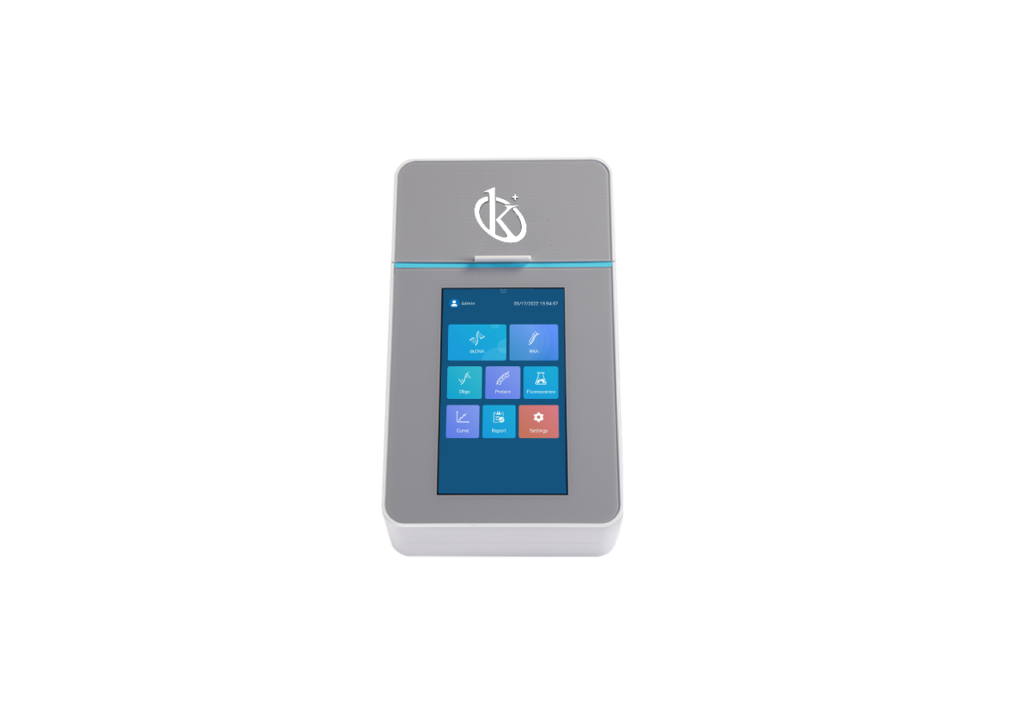The fluorometer is an analytical device designed to determine the species and the concentration of fluorescent compounds, allowing the performance of complete photophysical studies. Its reliability, the meticulousness of the operational control, which is sensitive, specific for biological and chemical species, the simplicity of its configuration and its low operating costs, are characteristics that distinguish it from other analysis techniques.
It is an equipment that adapts easily to the routine laboratory, to use as a field instrument, and serves as a reference for support in scientific research. It is a valuable analytical tool for both quantitative and qualitative analysis.
Fluorometer and its applications
The fluorometer stands out for its wide range of applications:
- In inorganic chemistry it is used in the determination of ruthenium in metallic platinum, and aluminum, boron, chromium and magnesium in steel alloys.
- In materials science, it is used in the study of the mechanisms of oxidation, degradation and stabilization of polymers (through the incorporation of fluorophores in polymeric media), among others.
- In environmental management, it is used for the identification of sources of pollutants in water, detection of petroleum-derived compounds and hydrocarbon spill spots on the surface in tributaries.
- In molecular biology, due to its high sensitivity, it is used to quantify DNA, RNA and polymerase chain reaction (PCR) products. It is also used to detect DNA contamination in drugs, to assess species concentrations in drugs, and in vitamin assays for pharmaceutical procedures.
Fluorometry as an analysis technique
Fluorometry is a powerful and widely accepted technique in the scientific field. This has evolved since the early 1980s, and growth has been driven by the use of fluorescence as a non-invasive method by biology, biochemistry and chemistry. Fluorescence is an instantaneous process that occurs when molecules in a material are excited by the absorption of electromagnetic radiation. Electrons relax to their fundamental state, losing vibrational energy causing the emission spectrum to move to longer wavelengths. The half-life of an excited species is short.
Any molecule has an absorption spectrum and an emission spectrum, in which the excited atoms release their excess energy and relax to their fundamental state (fluorescent light emission). The absorption spectrum shows the relative efficiency of different wavelengths to produce fluorescence, while the emission spectrum indicates the relative intensity of the radiation emitted at various wavelengths. The time needed for fluorescence to occur is 10-8 to 10-7 s.
Things to consider when using a fluorometer
- Work with a standard sample as a reference, or in its absence a target (water or matrix liquid) that allows zeroing the equipment.
- Maintain a known concentration standard for the material to be evaluated. To calibrate the equipment to the point, it is preferable to use concentrations of 80 % of the highest concentration to be read.
- If concentrations above the linear range are to be determined, a calibration curve with several standards should be prepared.
- It is important that the standard solution to be evaluated is chemically stable.
- Filters can be used alone or in combination to select the desired spectral band.
- A fluorometer must be calibrated each time the lenses or filters are changed.
- Laboratory procedures, such as cleaning of laboratory material and careful preparation of standard samples, should be rigorous, as the solvents used for analysis should be free of absorbent impurities.
At Kalstein we are PRODUCERS, we offer you the YR412-A fluorometer series, it is a lightweight equipment, which allows to measure in ranges of five orders of magnitude, has a 4.3 inch touch screen, small and easy to use, has a measurement response capacity of 3 seconds, has a lower DNA detection limit is 0.5pg/ul, can combine the instrument with the reagent you choose. If you are interested in quoting, in BUYING or SELLING some of our products, please visit our catalog: HERE

